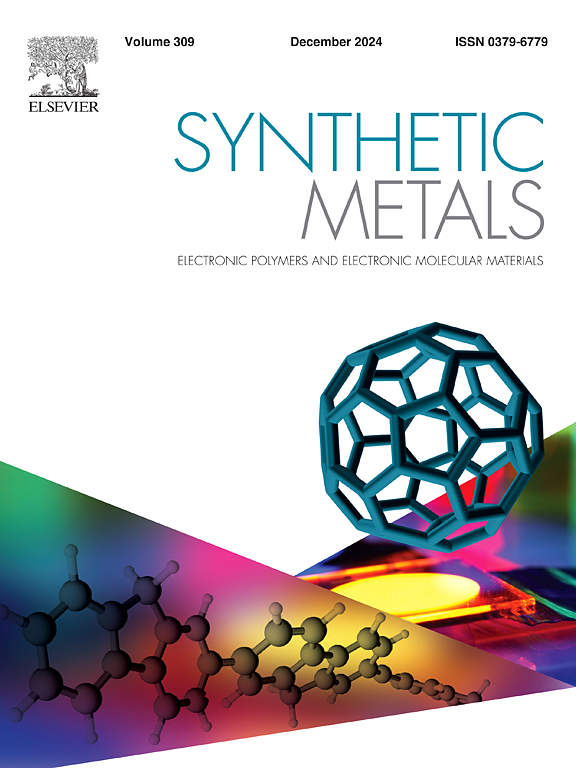将NiCo2S4硫系物与FeP和Fe2P磷化物集成以提高析氧反应效率
IF 4.6
3区 材料科学
Q2 MATERIALS SCIENCE, MULTIDISCIPLINARY
引用次数: 0
摘要
本文研究了含FeP和Fe₂P金属磷化物的Ni-Co硫系复合材料对析氧反应(OER)的催化性能。采用x射线衍射(XRD)、扫描电镜(SEM)和x射线光电子能谱(XPS)对合成的NiCo₂S₄、NiCo₂S₄@FeP和NiCo₂S₄@Fe₂P催化剂进行了表征。XRD分析证实了FeP和fe2 P有效包裹入NiCo₂S₄基体中,特征峰显示立方尖晶石结构和结晶磷化铁。SEM图像显示,复合材料表现出不同的形貌,FeP和Fe₂P颗粒分散在NiCo₂S₄表面,为催化反应提供了额外的活性位点。XPS光谱显示了催化剂的元素组成和化学状态,证实了Ni, Co, Fe, P和S元素的存在。包括线性扫描伏安法(LSV)和电化学阻抗谱法(EIS)在内的电化学测量表明,复合催化剂的OER活性比其单独组分更强。NiCo₂S₄@FeP在电流密度为500 mA cm−2时表现出最高的催化性能,过电位为322 mV,并保持超过96 h的稳定性,使其成为高效持久的水分解应用的有希望的候选人。本文章由计算机程序翻译,如有差异,请以英文原文为准。
Integrating NiCo2S4 chalcogenide with FeP and Fe2P phosphides for enhanced oxygen evolution reaction efficiency
This work examines the catalytic performance of Ni-Co chalcogenide composites integrated with FeP and Fe₂P metal phosphides for the oxygen evolution reaction (OER). The synthesized NiCo₂S₄, NiCo₂S₄@FeP, and NiCo₂S₄@Fe₂P catalysts were characterized using X-ray diffraction (XRD), scanning electron microscopy (SEM), and X-ray photoelectron spectroscopy (XPS). XRD analysis confirmed the effective inclusion of FeP and Fe₂P into the NiCo₂S₄ matrix, with characteristic peaks indicating a cubic spinel structure and crystalline iron phosphides. SEM images revealed that the composites exhibited distinct morphologies with FeP and Fe₂P particles dispersed across the NiCo₂S₄ surface, providing additional active sites for catalytic reactions. XPS spectra demonstrated the elemental composition and chemical states of the catalysts, confirming the presence of Ni, Co, Fe, P, and S elements. Electrochemical measurements, including linear sweep voltammetry (LSV) and electrochemical impedance spectroscopy (EIS), showed that the composite catalysts exhibited enhanced OER activity compared to their individual components. NiCo₂S₄@FeP displayed the highest catalytic performance with overpotential of 322 mV at a current density of 500 mA cm−2 and maintained stability for over 96 h, making it a promising candidate for efficient and durable water-splitting applications.
求助全文
通过发布文献求助,成功后即可免费获取论文全文。
去求助
来源期刊

Synthetic Metals
工程技术-材料科学:综合
CiteScore
8.30
自引率
4.50%
发文量
189
审稿时长
33 days
期刊介绍:
This journal is an international medium for the rapid publication of original research papers, short communications and subject reviews dealing with research on and applications of electronic polymers and electronic molecular materials including novel carbon architectures. These functional materials have the properties of metals, semiconductors or magnets and are distinguishable from elemental and alloy/binary metals, semiconductors and magnets.
 求助内容:
求助内容: 应助结果提醒方式:
应助结果提醒方式:


